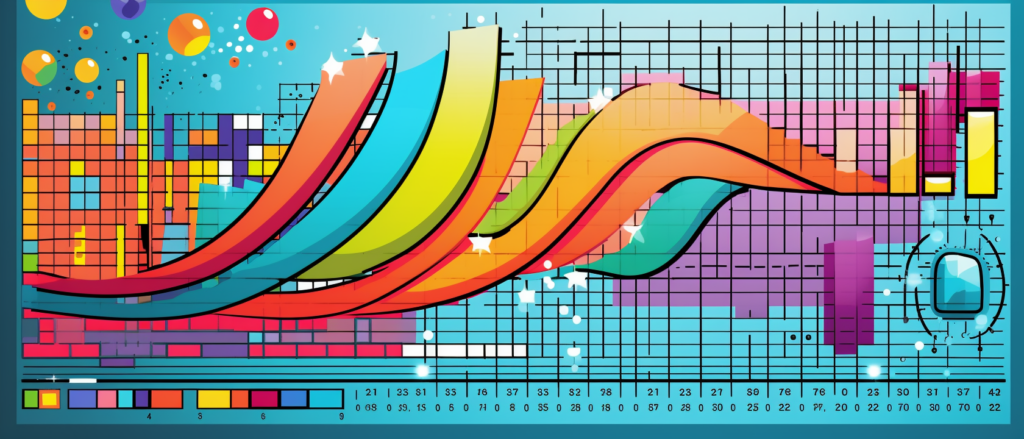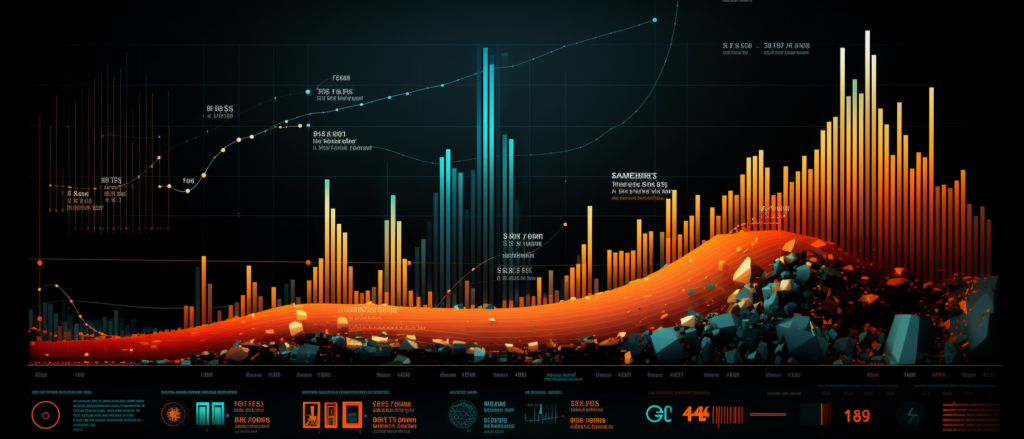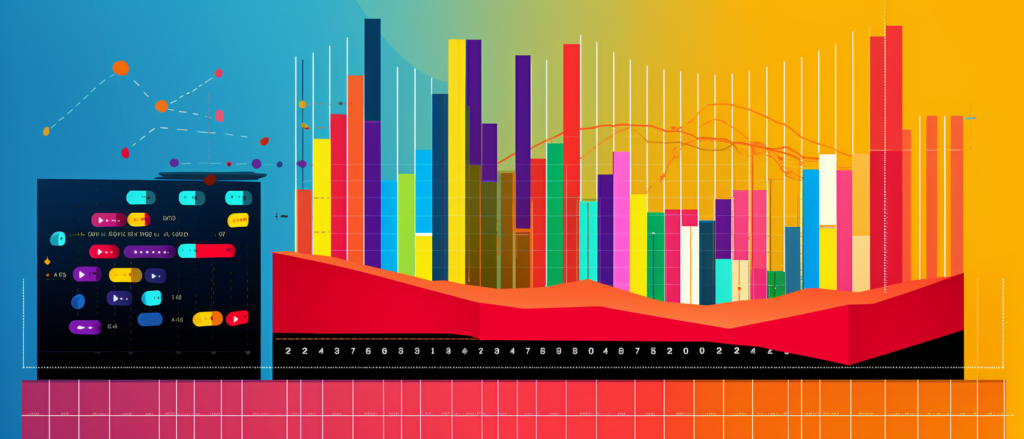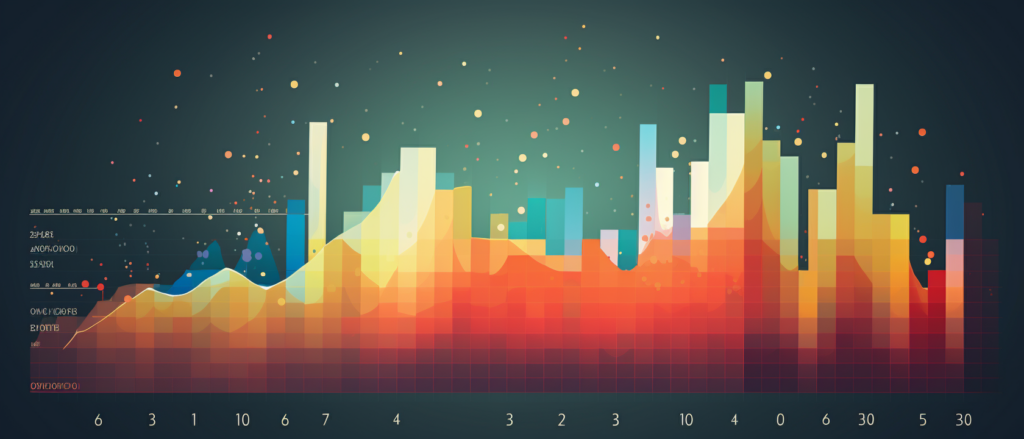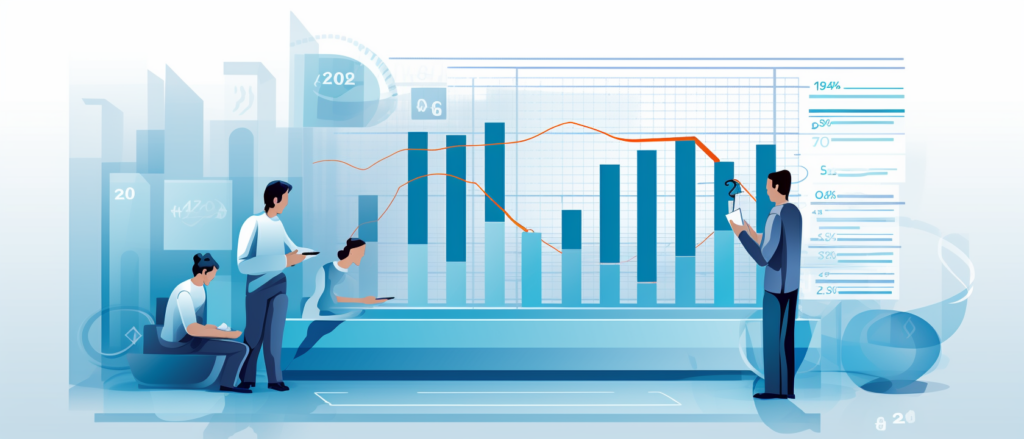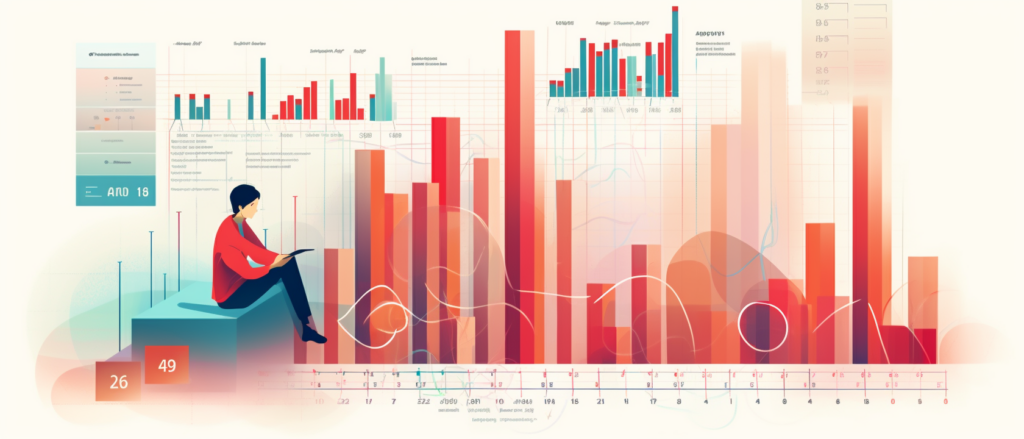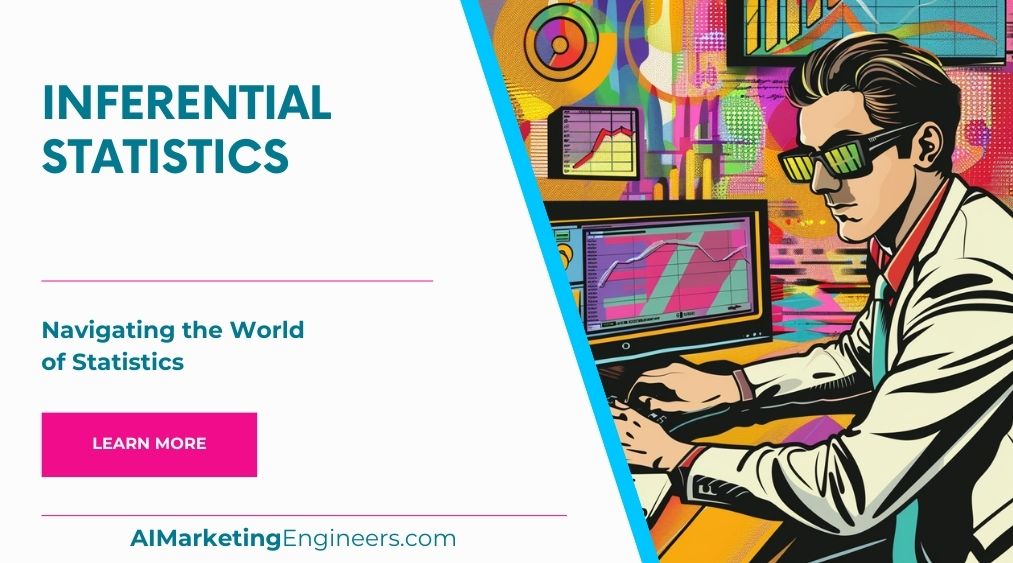Key Takeaways
✅ Fundamental Definition: Grasp the thread that weaves through every data-driven decision: statistics, the epicenter of meaningful data analysis, empowering you to interpret and present data with authority.
✅ Types of Data: Decode the DNA of statistics – qualitative and quantitative data – and learn to distinguish discrete gems from the continuum of information.
✅ Key Concepts: Equip yourself with statistical armor – understand populations and samples, descriptive and inferential statistics – and step into the arena of informed predictions.
Introduction
Have you ever marveled at the power of data to reveal the hidden truths of the universe? Welcome to “Mastering Statistical Fundamentals: A Captivating How-To Guide for Beginners,” where the arcane lore of numbers transforms into actionable knowledge. In a world bursting with information, understanding statistics is more than a skill, it’s essential armor in the arsenal of the informed.
Here, you’ll not only absorb foundational knowledge, but you’ll also discover innovative perspectives that will sharpen your analytical sword, paving the way for amplified revenue, optimized ROAS, and magnified ROI. Stay with us, and by the guide’s end, you will be wielding the power of statistics with newfound ease and precision, ready to uncover groundbreaking insights that can reshape your world.
Top Statistics
| Statistic | Insight |
|---|---|
| Global Business Analytics & Enterprise Software Market Growth: Projected to grow from $54.39 billion in 2020 to $68.74 billion in 2021. (Source: BusinessWire) | This significant market expansion reflects a robust demand for analytical capabilities, fundamental for organizations seeking to harness the power of data. |
| Online Learning in Mathematics and Statistics: 27% of U.S. adults using online learning platforms engaged with these subjects. (Source: Statista) | Digital education trends emphasize the importance of statistical literacy as a valued skill across disciplines and careers. |
| Data Analysis Skills among IT Decision Makers: 44% consider these skills a top priority for new hires. (Source: Global Knowledge) | The emphasis on data analysis signals a shift towards data-driven decision-making in IT and beyond, underscoring the strategic value of statistical expertise. |
| AI & ML Combined with Graph Technologies: More than 50% of organizations will adopt this approach by 2025 to improve data preparation and AI explainability. (Source: Gartner) | The fusion of graph technologies with AI and ML will be transformational, offering new horizons in analytics and data interpretation. |
| Big Data and Business Analytics (BDA) Solutions Revenue: Expected to reach $274.3 billion in 2022 with a CAGR of 13.6%. (Source: IDC) | The trajectory for BDA solutions underscores the burgeoning demand for insights that can be actioned into competitive advantage and operational efficiency. |
Fundamental Statistical Concepts
To truly grasp the power of statistics, it's essential to understand some of the basic concepts that form the foundation of this discipline. One such concept is the idea of variables – the different types of data we collect, such as categorical (e.g., gender, location) and numerical (e.g., age, income).
Another crucial element is the measurement of central tendency, which includes the mean, median, and mode. These statistical measures help us understand the typical or central value within a dataset. Complementing this, the concept of dispersion, encompassing variance and standard deviation, sheds light on how the data is spread out or distributed.
Probability and probability distributions also play a vital role in statistical analysis, allowing us to quantify the likelihood of certain events occurring and make informed predictions.
Collecting and Organizing Data
Of course, the journey of statistical analysis begins with the collection and organization of data. Sampling, the process of selecting a representative subset of a larger population, is crucial to ensure the validity and reliability of our findings. The methods we choose for data collection, such as surveys, experiments, or observations, can greatly impact the quality and usefulness of the information we gather.
Once the data is collected, it's vital to organize it in a structured manner, often using data tables and spreadsheets. This step also involves data cleaning, where we identify and address any inconsistencies or errors in the information we've gathered.
Visualizing and Interpreting Data
With the data collected and organized, the next step is to bring it to life through various visualization techniques. From classic bar charts and histograms to more sophisticated scatter plots, the right data visualization can help us uncover patterns, trends, and relationships that might otherwise remain hidden.
Interpreting the statistical measures we've calculated, such as the mean, variance, and standard deviation, is also a crucial skill. By understanding what these metrics truly represent and how to apply them in context, we can draw meaningful insights that can inform our decision-making and drive real-world impact.
Inferential Statistics
As we move beyond the realm of descriptive statistics, the field of inferential statistics comes into play. Here, we delve into the principles of hypothesis testing, exploring how we can make inferences about a broader population based on the data we've collected from a sample.
Correlation and regression analysis also fall under the umbrella of inferential statistics, allowing us to uncover the relationships between different variables and make predictions based on those relationships.
Applications of Statistics
The beauty of statistics lies in its wide-ranging applicability. From the boardrooms of Fortune 500 companies to the research labs of leading universities, this discipline has the power to transform the way we understand and interact with the world around us.
Whether it's optimizing business strategies, improving healthcare outcomes, or uncovering insights in the social sciences, the judicious application of statistical analysis can inform better decision-making, drive innovation, and ultimately, make a tangible difference in people's lives.
Inspirational Quotes
1. “Statistics is the grammar of science.” – Karl Pearson
In the eloquent words of Karl Pearson, we’re reminded of the intrinsic connection between statistical understanding and scientific advancement. Just as grammar provides the scaffolding for language, statistics is the essential framework that breathes life into raw data. Embracing this concept is key to unlocking the rich stories our data has to tell.
2. “In God we trust; all others must bring data.” – W. Edwards Deming
With a touch of humor and profound wisdom, W. Edwards Deming captures the essence of modern-day empirical skepticism. Data, not conjecture, is the currency of credible decision-making. In the realm of science and beyond, invoking the discipline of statistics is less an option and more a mandate for those seeking to influence and lead.
3. “Big Data will spell the death of customer segmentation and force the marketer to understand each customer as an individual within 18 months or risk being left in the dust.” – Virginia M. Rometty
Virginia M. Rometty delivers a wake-up call for all marketers: the era of Big Data is not looming—it’s here. Grasping the nuances of statistics is no longer a luxury but a necessity to stay afloat in an ocean of digital intelligence. It’s a clarion call for us to adapt, to harness the power of data, and to personalize experiences like never before.
AI Marketing Engineers Recommendation
Recommendation 1: Leverage Predictive Analytics for Customized User Experiences: Utilize the principles found in “Defining Statistics: An Essential Guide to Basic Concepts” to embrace predictive analytics. By analyzing historical and real-time data, e-commerce businesses can forecast customer behaviors, preferences, and future sales. Data shows that personalized product recommendations can boost revenue by up to 26% and predictive analytics is the key technology underpinning this personalization.
Recommendation 2: Enhance Data-Driven Decision-Making with Statistical Significance: Employ statistical significance–a core concept from your essential guide–to elevate decision-making processes. This includes A/B testing for marketing campaigns, website design changes, and even pricing strategies. The latest trends affirm that data-driven organizations are 23 times more likely to acquire customers. Hence, understand statistical significance to discern meaningful patterns from the noise, ensuring resource investment in strategies that truly matter.
Recommendation 3: Adopt Robust Analytics Tools to Streamline Data Interpretation: Incorporate advanced analytics tools like Google Analytics, Adobe Analytics, or specialized AI tools such as Tableau, to translate complex statistical concepts into digestible insights. Tools like these not only provide a means to collect and organize vast amounts of data but also offer advanced features for interpreting and visualizing data, making the application of statistical concepts both accessible and actionable for e-commerce businesses of all sizes.
Conclusion
As we draw the curtains on our journey through Defining Statistics: An Essential Guide to Basic Concepts, we find ourselves not at the end, but at the precipice of a new vista in the landscape of knowledge. Statistics is not merely a branch of mathematics; it’s a toolkit for understanding the world around us. With the foundational concepts in data collection, descriptive and inferential analysis, probability, and regression models under our belt, we are now empowered to unlock insights and make informed decisions in seemingly disparate fields like economics, healthcare, and beyond.
Remember, the nuances of statistical analysis can transform raw data into compelling stories for business strategy and social development. It’s the application of these concepts that will differentiate the dabbler from the expert. A grasp on statistical literacy equips you with a critical eye for evaluating claims, conducting robust research, and driving innovation based on empirical evidence.
Furthermore, in an era where the term ‘data-driven’ is not just a buzzword but a business imperative, mastering statistics is a clear path to gaining a competitive edge. From formulating effective marketing strategies to optimizing operational efficiencies, the seeds of statistical wisdom will germinate into actions that propel growth and sustainability.
Embrace this knowledge, continue nurturing your curiosity, and apply your skills to the real world. Let statistics be the lens through which you view complexity, not with trepidation, but with analytical acuity. The guide might end here, but your journey with statistics is just beginning. Dare to delve deeper, and be part of the narrative that shapes tomorrow’s innovations with today’s data.
FAQs
Question 1: What is the purpose of studying statistics?
Answer: Studying statistics helps us understand data, make informed decisions, draw conclusions from research findings, and communicate results effectively in various fields such as business, science, social sciences, and medicine.
Question 2: Who can benefit from learning basic statistical concepts?
Answer: Anyone who deals with data, including students, researchers, professionals, decision-makers, and individuals interested in understanding how data influences their lives.
Question 3: What are the fundamental components of statistics?
Answer: The fundamental components include descriptive statistics (measures of central tendency, dispersion), probability theory, and inferential statistics (hypothesis testing, confidence intervals).
Question 4: How does statistics differ from mathematics?
Answer: While both involve quantitative analysis, statistics focuses on collecting, analyzing, interpreting, and presenting data, whereas mathematics emphasizes theoretical proofs and abstract concepts.
Question 5: Can you explain the concept of population vs. sample in statistics?
Answer: A population refers to all members of a group under study, while a sample is a subset of the population used to represent its characteristics. Samples allow statisticians to analyze populations without examining every member.
Question 6: What is the difference between parametric and nonparametric tests?
Answer: Parametric tests assume that data follows a particular distribution (e.g., normal distribution), while nonparametric tests do not make such assumptions. Nonparametric tests are often used when data violates parametric test assumptions.
Question 7: How do I choose the appropriate statistical test for my data?
Answer: The choice of statistical test depends on the type of data, research question, and study design. Common tests include t-tests, ANOVA, chi-square tests, and regression.
Question 8: What is the role of probability in statistics?
Answer: Probability theory provides a framework for understanding randomness and uncertainty in data. It helps statisticians make predictions, estimate the likelihood of events, and interpret the results of statistical tests.
Question 9: How do I interpret statistical significance?
Answer: Statistical significance indicates that the results of a study are unlikely to be due to chance alone. A statistically significant result means that the observed effect is likely to be real, not just a random fluke.
Question 10: What are some common misconceptions about statistics?
Answer: Common misconceptions include equating statistical significance with practical importance, assuming that correlation implies causation, and over-reliance on p-values without considering effect sizes or other measures of statistical evidence.
Question 11: How can I communicate statistical results effectively?
Answer: Clear and concise communication of statistical results involves using appropriate visualizations (e.g., graphs, charts), avoiding jargon, and providing context to help readers understand the implications of the results.
Question 12: What are some practical applications of statistics in everyday life?
Answer: Statistics is used in various aspects of daily life, including medical research, weather forecasting, market research, quality control, and decision-making in business, government, and personal finance.
Academic References
- Salkind, N.J. (2017). Statistics for people who (think they) hate statistics (6th ed.). SAGE Publications. This comprehensive textbook introduces fundamental statistical concepts and techniques in an accessible manner, emphasizing practical applications across various disciplines. The key contribution is to demystify complex topics through real-world examples and engaging explanations.
- De Veaux, R.D., Velleman, P.F., & Bock, D.E. (2019). Introduction to statistical methods (5th ed.). Pearson Education. A widely used introductory text that covers essential statistical methods, including descriptive statistics, probability theory, hypothesis testing, and regression analysis. It provides a balanced blend of mathematical rigor and applied problem-solving, making it suitable for students from diverse backgrounds.
- Witte, R.S., & Witte, J.S. (2014). Understanding statistics (8th ed.). Cengage Learning. This book offers an intuitive introduction to basic statistical principles, focusing on developing conceptual understanding rather than computational skills. The key contribution is the emphasis on the role of critical thinking in interpreting data and drawing inferences, fostering statistical literacy among readers.
- Gonick, L., & Smith, W. (1993). The cartoon guide to statistics. HarperCollins Publishers. A unique approach to learning statistics, this illustrated guide presents core statistical ideas using humorous cartoons and engaging narratives. Its key contribution is making complex statistical concepts more accessible and memorable through visual storytelling.
- Hand, D.J. (2008). Statistics: A very short introduction. Oxford University Press. A concise and engaging overview of statistics, covering its history, fundamental concepts, and real-world applications. This book provides a broad perspective on the role of statistics in society and its relevance to various disciplines.

